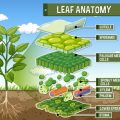Introduction to Foraging in the UK Countryside
Foraging is a practice deeply woven into the tapestry of British history and culture. Long before modern supermarkets, our ancestors relied on the land’s natural bounty, gathering wild herbs, berries, and mushrooms as both sustenance and medicine. Today, foraging is enjoying a renaissance across the UK countryside, not only as a means to connect with nature but also as a mindful activity that nourishes both body and spirit. As people seek to slow down amidst busy urban lives, foraging offers an opportunity to rediscover ancient wisdom, appreciate the rhythms of the seasons, and cultivate a sense of harmony with the environment. Whether you are drawn by curiosity or a desire for natural wellness, understanding the roots and resurgence of foraging in Britain will enrich your countryside adventures and foster a deeper respect for the land.
2. Essential Safety Guidelines and Legal Considerations
Foraging in the UKs picturesque countryside is a rewarding practice, deeply rooted in traditional herbalism and modern wellbeing. However, to maintain both personal safety and environmental harmony, it is essential to understand the legal landscape and best practices before setting out.
Understanding UK Foraging Laws
The UK has clear regulations concerning foraging, designed to protect both nature and individuals. Most wild plants may be picked for personal use (not commercial gain) from public spaces or with landowner permission. However, certain species are legally protected under the Wildlife and Countryside Act 1981. It is also illegal to uproot any wild plant without landowner consent.
| Legal Aspect | Key Points |
|---|---|
| Picking Wild Plants | Allowed for personal use; not for sale or trade |
| Uprooting Plants | Requires explicit landowner permission |
| Protected Species | Illegal to pick or disturb listed species (refer to official lists) |
| Private Land Access | Always seek permission; trespassing is an offence |
Critical Safety Measures When Foraging
- Accurate Identification: Never consume any plant or fungus unless you are 100% certain of its identity. Many edible species have toxic lookalikes.
- Avoid Polluted Areas: Stay clear of roadsides, industrial zones, and areas treated with pesticides to minimise exposure to contaminants.
- Sustainable Harvesting: Take only what you need and leave plenty behind to support wildlife and future growth—an approach in line with both ecological wisdom and traditional respect for nature’s rhythms.
- Personal Protection: Wear gloves when necessary, carry a field guide, and inform someone of your whereabouts before setting out.
- Mind Allergies & Reactions: Some wild foods can trigger allergies or interact with medications; if unsure, consult a qualified herbalist or healthcare professional first.
The Principle of Respectful Foraging
A harmonious relationship with nature lies at the heart of British countryside traditions. Practice gratitude for the gifts of the land: harvest mindfully, tread lightly, avoid damaging roots, and always close gates behind you. This respectful attitude not only preserves biodiversity but also nurtures your own sense of wellbeing—a core tenet of holistic health approaches inspired by both Eastern and Western traditions.

3. Identifying Safe and Sustainable Wild Edibles
Foraging in the UK’s countryside offers a treasure trove of edible plants, mushrooms, and berries that can nourish both body and spirit. However, wise foragers must combine practical knowledge with deep respect for nature. By learning to accurately identify wild edibles and harvest them responsibly, you contribute to the land’s health and your own wellbeing.
Common Edible Plants in the UK
The British landscape is home to numerous edible plants. Stinging nettle (Urtica dioica), when cooked, provides a rich source of vitamins and minerals, supporting the body’s qi and blood. Wild garlic (Allium ursinum) carpets ancient woodlands in spring; its leaves add a gentle pungency that invigorates digestion. Dandelion (Taraxacum officinale) offers leaves for salads and roots for teas, harmonising the liver according to traditional wisdom. Always check for distinctive features: leaf shape, flower colour, and scent are key guides.
Safe Mushroom Foraging
Mushroom identification requires patience and caution. Popular species like field mushrooms (Agaricus campestris) and chanterelles (Cantharellus cibarius) reward the attentive eye. Examine spore colour, gill attachment, cap texture, and stem base—never rely on one feature alone. If uncertain, consult an experienced local forager or join a guided walk; remember that some mushrooms have toxic lookalikes which can upset the bodys delicate balance.
Berries: Nature’s Seasonal Medicine
Hedgerows abound with edible berries such as blackberries, sloes, and elderberries. These fruits are rich in antioxidants—nature’s way of supporting immune resilience through seasonal transitions. Learn to distinguish between safe berries and their harmful counterparts by observing cluster formation, leaf pattern, and ripening time.
Practical Tips for Identification
- Carry a reliable field guide or use trusted apps tailored to UK flora.
- Observe several characteristics—never consume anything unless you’re completely sure of its identity.
- If in doubt, leave it out; avoid overharvesting even common species to allow regeneration.
Sustainable Harvesting Practices
- Follow the “one-third rule”: take no more than a third from any patch to preserve plant populations.
- Avoid uprooting entire plants; harvest leaves or parts gently with clean hands or tools.
- Respect protected areas and private land—seek permission if unsure.
Nurturing a mindful connection with the land ensures that wild foraging remains a source of nourishment for generations. By blending practical observation with reverence for nature’s rhythms—a principle at the heart of both traditional medicine and countryside wisdom—you cultivate harmony within yourself and the earth alike.
4. Seasonal Foraging: What to Find and When
Foraging in the UK is a practice deeply attuned to the ebb and flow of the seasons, echoing ancient wisdom that encourages us to gather what nature offers at its peak. By aligning your foraging habits with the natural rhythms of the British countryside, you not only ensure the freshest and most nutritious wild foods, but also foster a respectful relationship with the land. Understanding when certain plants, fruits, and fungi are most abundant helps protect local ecosystems and enhances your own wellbeing—a core tenet of holistic living.
Spring: Renewal and Tender Greens
As the countryside awakens from winter’s rest, spring brings a bounty of young shoots and edible flowers. Early greens such as wild garlic and nettles are rich in minerals and cleansing properties, supporting your body’s seasonal transition. Edible blossoms like primrose and elderflower also emerge, perfect for uplifting herbal teas or delicate salads.
Summer: Abundance and Fruiting
The height of summer sees woodlands and hedgerows brimming with berries, herbs, and wild vegetables. This is the ideal time to forage for elderberries, raspberries, meadowsweet, and aromatic herbs such as mint. These gifts from nature can be enjoyed fresh or preserved for use throughout the year, sustaining vitality beyond the summer months.
Autumn: Harvesting Roots and Nuts
Autumn is a season of gathering and grounding. Nature offers chestnuts, hazelnuts, sloes, rosehips, mushrooms like chanterelles, and robust roots such as burdock. These foods are warming and nourishing—perfect for supporting immune function as days grow shorter.
Winter: Limited Offerings with Deep Nourishment
The landscape quietens in winter, but persistent foragers may still find hardy greens (like chickweed), rosehips clinging to bare branches, or even sweet chestnuts underfoot. These scarce yet potent treasures remind us to embrace simplicity and rest during colder months.
Seasonal Foraging Calendar
| Season | Key Wild Foods | Best Foraging Months |
|---|---|---|
| Spring | Wild garlic, nettles, dandelion leaves, primrose, elderflower | March – May |
| Summer | Elderberries, raspberries, meadowsweet, mint | June – August |
| Autumn | Sloes, rosehips, chestnuts, hazelnuts, mushrooms (chanterelles) | September – November |
| Winter | Chickweed, rosehips (late), sweet chestnuts (late) | December – February |
A Mindful Approach Rooted in Tradition
Tuning into these seasonal patterns is more than practical; it reflects an ancient wisdom found in both British folk tradition and Eastern medicine. Just as Traditional Chinese Medicine encourages eating with the seasons to harmonise body and spirit, so too does mindful foraging invite us to move gently with nature’s cycles—gathering only what we need, leaving plenty for wildlife and future growth.
5. Foraging Mindfully: Harmonising with Nature
Foraging in the UKs countryside is not just a practical activity, but an opportunity to reconnect with the natural world and embrace the ancient wisdom of harmony and balance. As you step into woodlands, meadows, or hedgerows, it is essential to cultivate a mindful approach, rooted in respect for both natures abundance and her fragility.
Embracing Balance and Respect
Just as traditional Chinese medicine teaches us to seek balance within our own bodies, we must also strive for balance with the land we forage from. Take only what you need, leaving plenty behind for wildlife and the next generation of plants. This mindful harvesting ensures that ecosystems can continue to flourish, supporting not only your own wellbeing but also that of the broader countryside.
Sustainable Foraging Practices
Always adhere to the Countryside Code and local guidelines. Never uproot entire plants or strip bushes bare; instead, pick selectively and sparingly. Consider the health of each patch—if a particular herb or mushroom seems scarce, move on rather than risk depleting a vulnerable population. Rotate your foraging spots throughout the season to avoid placing undue pressure on any single area.
Biodiversity Preservation
The UKs varied habitats are home to countless species, many of which depend on wild foods for survival. By foraging mindfully, you play a part in protecting this intricate web of life. Avoid disturbing nests or habitats, and take care not to trample undergrowth or disrupt soil structure. Remember that every action has an impact—preserving biodiversity ensures that future generations can enjoy the countrysides bounty as well.
Cultivating Presence and Gratitude
Foraging offers a chance to slow down and attune your senses to the rhythms of nature. Take time to observe changes in weather, listen to birdsong, and appreciate the interconnectedness of all living things. Approaching your foraging practice with gratitude deepens your connection to the land and fosters a sense of stewardship that extends beyond the basketful you gather.
By harmonising your actions with nature’s cycles and respecting her limits, you not only gather nourishing wild foods but also nurture your own inner equilibrium—a practice that benefits both body and spirit in true holistic fashion.
6. Preparing and Enjoying Your Foraged Finds
Honouring Nature’s Bounty: Cleaning and Storing
Once you’ve returned home from your countryside adventure, it’s essential to handle your wild harvest with care and respect, reflecting the British tradition of mindful stewardship. Begin by thoroughly cleaning your finds. Use a soft brush or damp cloth to gently remove soil and debris—avoid soaking delicate mushrooms and leaves, as excessive water can diminish flavour and texture. For berries and nuts, a swift rinse under cool running water is sufficient. Pat everything dry with a clean towel to prevent spoilage.
Storing for Freshness
To retain the vitality and nutrients of your wild harvest, proper storage is key. Hardy greens like nettles or sorrel can be wrapped in a damp cloth and stored in the fridge for up to three days. Mushrooms fare best in paper bags, which allow them to breathe while preventing moisture build-up. Berries should be spread out on a tray lined with kitchen paper, refrigerated, and consumed within two days for optimal freshness. If abundance blesses you, consider traditional preservation techniques such as drying herbs or making jams and pickles—a nod to Britain’s resourceful culinary past.
Traditional British Culinary Methods
The UK’s rich culinary heritage offers countless ways to savour your foraged ingredients. Nettles can be transformed into nourishing soups or brewed as a gentle herbal tea, echoing centuries-old remedies for vitality. Wild garlic adds fragrance to omelettes or classic bubble and squeak, while blackberries shine in timeless crumbles and jams. Remember that slow simmering or gentle steaming helps retain both nutrients and subtle flavours—an approach prized by cooks seeking harmony between nourishment and taste.
Modern Healthful Recipes
Embrace contemporary wellness by blending traditional wisdom with modern healthful recipes. Toss wild greens into vibrant salads with local apples and toasted hazelnuts, or create energy-boosting smoothies using fresh-picked berries. Fermenting wild herbs into probiotic-rich kimchi or adding them to wholegrain breads reflects today’s holistic approach to eating—balancing nutrition with the rhythms of nature. As always, listen to your body’s needs: enjoy these gifts in moderation and gratitude, fostering both physical wellbeing and a deeper connection to Britain’s living landscape.


